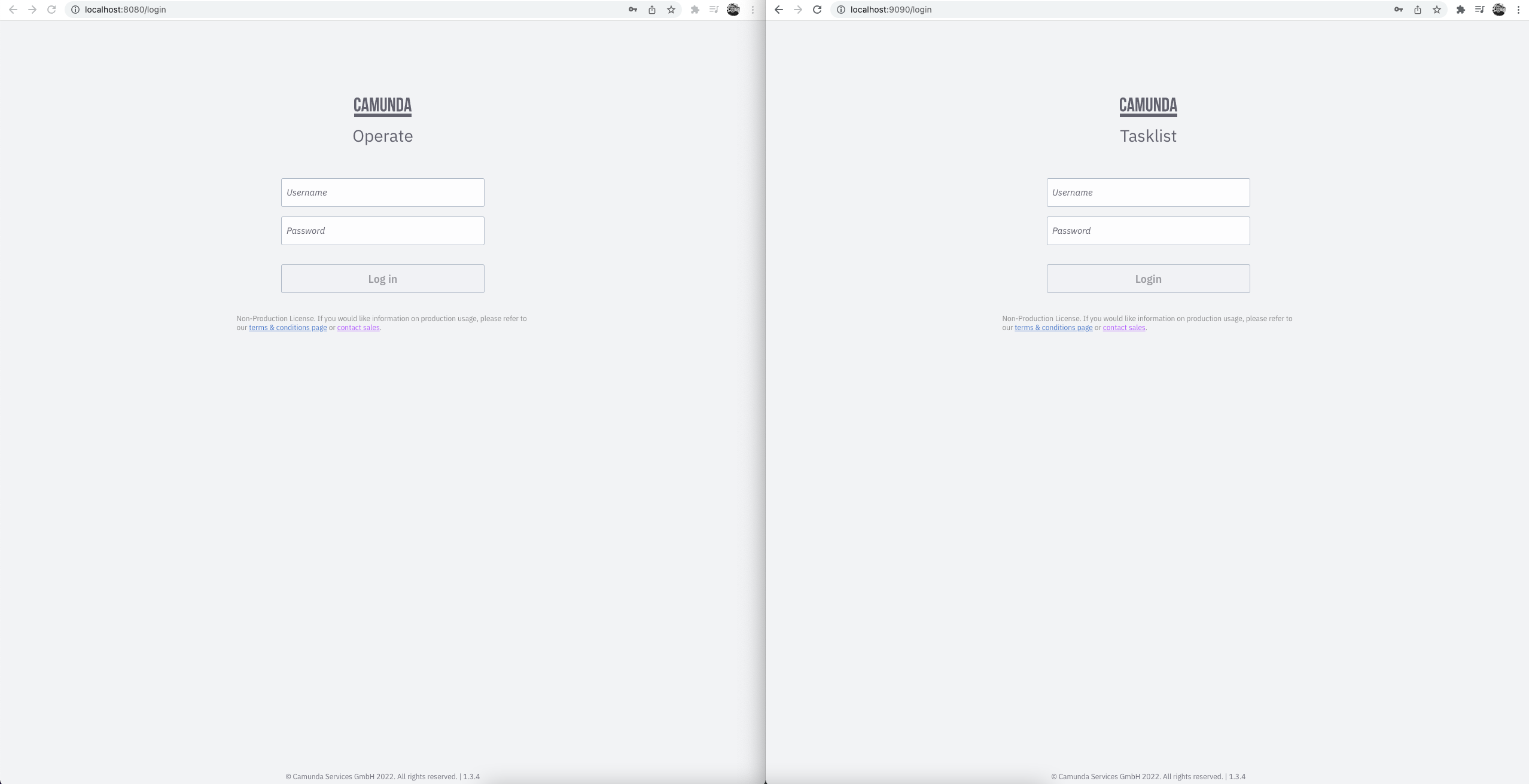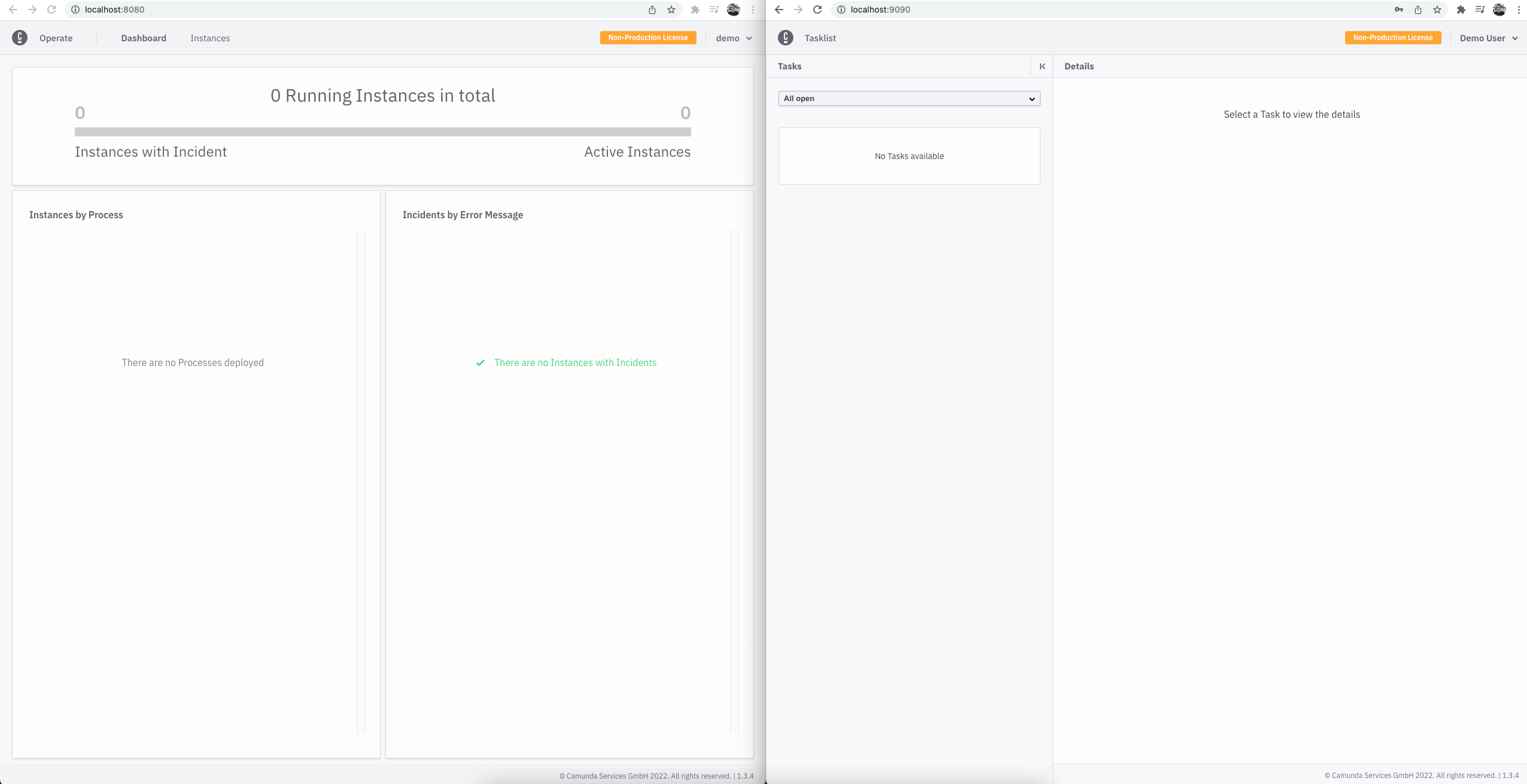Accessing Operate and Tasklist outside the cluster
To interact with the services inside the Camunda Cloud cluster, use port-forward to route traffic from your environment to the cluster.
> kubectl port-forward svc/<RELEASE NAME>-zeebe-gateway 26500:26500
Now, you can connect and execute operations against your new Camunda Cloud cluster. This allows you to use zbctl as a command line interface to read and create resources inside the Zeebe broker. You can install zbctl via npm.
Notice that you need to keep port-forward running to communicate with the remote cluster.
Note thay accessing the Zeebe cluster directly using kubectl port-forward is recommended for development purposes.
By default, the Camunda Cloud Helm charts are not exposing the Zeebe cluster via the ingress controller. If you want to use zbctl or a local client/worker from outside the Kubernetes cluster, rely on kubectl port-forward to the Zeebe cluster to communicate.
You can find the external IP by running the following:
> kubectl get svc
You should see something like the following:
NAME TYPE CLUSTER-IP EXTERNAL-IP PORT(S) AGE
<RELEASE NAME>-zeebe-gateway LoadBalancer 10.109.108.4 <pending> 80:30497/TCP,443:32232/TCP 63m
The <pending> under the EXTERNAL-IP column should change to a public IP that you (and other users) should be able to access from outside the cluster. Check your cloud provider's specific configuration if that does not work.
Then, you can access Operate pointing your browser at http://<EXTERNAL-IP>.
If no ingress is enabled (e.g. like in Kubernetes KIND), you will need to port-forward. In a different terminal, run the following:
> kubectl port-forward svc/<RELEASE NAME>-operate 8080:80
> kubectl port-forward svc/<RELEASE NAME>-tasklist 9090:80
Then, you can access Operate pointing your browser at http://localhost:8080, and Tasklist pointing at http://localhost:9090. Log in to these services using the demo/demo credentials.
Operate and Tasklist Login

Operate and Tasklist Login

If you deploy process definitions, they will appear in the dashboard. Then, you can drill down to see your active instances.
You can deploy and create new instances using the Zeebe clients or zbctl.